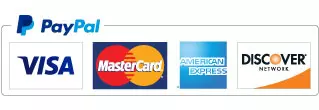In today's digital landscape, providing a personalized user experience is essential for engaging visitors and driving conversions. By tailoring your website to individual users, you can create a unique and relevant experience that resonates with your audience.
In this blog post, we will explore the power of personalization and provide you with insights on how to implement dynamic content and recommendations that drive conversions. Discover how personalization can enhance user engagement and boost your website's performance. Let's dive in and learn how to personalize the user experience! 👥
Understand Your Audience:
To create personalized experiences, you need to have a deep understanding of your target audience. Conduct market research, gather user data, and analyze website analytics to gain insights into your visitors' demographics, preferences, and behaviors. This information will help you tailor your website to meet their specific needs.
Segment Your Audience:
Segmenting your audience allows you to group visitors based on common characteristics or behaviors. By creating segments, you can deliver targeted content and recommendations to each group. Consider factors such as demographics, browsing history, purchase behavior, and engagement level when defining your segments.
Implement Dynamic Content:
Dynamic content enables you to display customized elements on your website based on user data and behavior. Leverage tools and technologies that allow you to dynamically change headlines, images, offers, and calls-to-action to match each visitor's interests and preferences. Personalized content creates a sense of relevance and increases the likelihood of conversion.
Offer Personalized Recommendations:
Recommendation engines can be a powerful tool for driving conversions. Analyze user behavior and preferences to provide personalized product recommendations, related articles, or suggested content. These recommendations can help visitors discover relevant information and products that align with their interests, leading to increased engagement and conversions.
Optimize User Journey:
Create personalized user journeys by mapping out the various touchpoints and interactions visitors have with your website. Identify opportunities to deliver personalized content and recommendations at each stage of the journey. From the initial landing page to the checkout process, ensure that each step is tailored to the individual user, guiding them towards conversion.
Leverage Behavioral Triggers:
Behavioral triggers allow you to respond to specific user actions in real-time. For example, you can display a pop-up offering a discount when a visitor abandons their cart or provide a personalized message to a returning customer. By leveraging behavioral triggers, you can capture users' attention at the right moment and encourage them to take action.
Continuously Test and Refine:
Personalization is an ongoing process. Continuously test different personalized elements, content variations, and recommendations to understand what resonates best with your audience. Analyze the results and make data-driven decisions to refine your personalization strategies and improve conversion rates over time.
Conclusion:
Personalizing the user experience is a powerful strategy for creating a tailored and engaging journey for your website visitors. By implementing dynamic content, recommendations, and personalized elements, you can enhance user engagement, increase conversions, and drive the success of your website. Understand your audience, segment your visitors, implement dynamic content and personalized recommendations, optimize the user journey, leverage behavioral triggers, and continuously test and refine your strategies. Embrace the power of personalization today and watch as your website's performance soars! 👥




